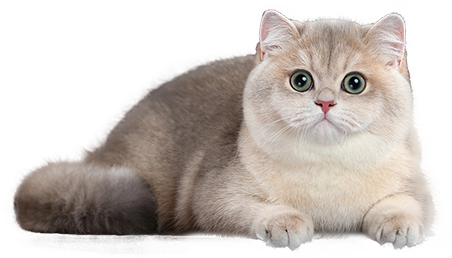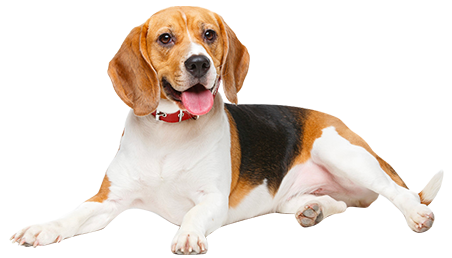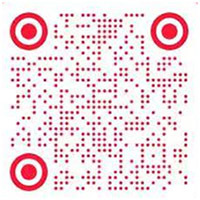Unlocking Health: The Benefits of Nutrient-Rich Cat Food
Unlocking Health: The Benefits of Nutrient-Rich Cat Food
Table of Contents
1. Introduction to Nutrient-Rich Cat Food
2. Understanding Cat Nutritional Needs
3. Key Nutrients in Cat Food
3.1 Protein: The Building Block of Health
3.2 Fats: Energy and Nutrient Absorption
3.3 Carbohydrates: Fuel for Activity
3.4 Vitamins and Minerals: Essential for Wellness
4. Benefits of Nutr
2025/01/13
Unlocking Health: The Benefits of Nutrient-Rich Cat Food
Table of Contents
1. Introduction to Nutrient-Rich Cat Food
2. Understanding Cat Nutritional Needs
3. Key Nutrients in Cat Food
3.1 Protein: The Building Block of Health
3.2 Fats: Energy and Nutrient Absorption
3.3 Carbohydrates: Fuel for Activity
3.4 Vitamins and Minerals: Essential for Wellness
4. Benefits of Nutrient-Dense Cat Food
4.1 Improved Digestion and Nutrient Absorption
4.2 Enhanced Energy Levels and Activity
4.3 Healthier Skin and Coat
4.4 Stronger Immune System
4.5 Optimal Weight Management
5. Choosing the Right Nutrient-Rich Cat Food
5.1 Reading Labels: What to Look For
5.2 Dry vs. Wet Cat Food: Pros and Cons
5.3 Grain-Free and Limited Ingredient Diets
6. Common Misconceptions About Cat Nutrition
7. Transitioning Your Cat to Nutrient-Rich Food
8. Frequently Asked Questions
9. Conclusion
1. Introduction to Nutrient-Rich Cat Food
In today's world, pet owners are more conscious than ever about their cats' health. With an array of commercial pet foods available, it can be overwhelming to choose the right one. **Nutrient-rich cat food** is not just a trend; it’s essential for promoting a long, healthy life for our feline friends. This article will delve into the critical role of nutrients in cat food and how they directly impact your pet's well-being.
2. Understanding Cat Nutritional Needs
Cats are obligate carnivores, which means their dietary needs differ significantly from those of omnivores like dogs. They require a diet high in protein and certain fats to thrive. Understanding these requirements is the first step toward selecting the best nutrient-rich cat food for your pet.
3. Key Nutrients in Cat Food
To ensure optimal health, it’s crucial to look for specific nutrients in your cat's food. Here are some of the essential components:
3.1 Protein: The Building Block of Health
Protein is paramount in a cat's diet, aiding in muscle development, tissue repair, and overall growth. High-quality protein sources, such as chicken, fish, or turkey, should be the primary ingredient in any cat food.
3.2 Fats: Energy and Nutrient Absorption
Fats provide the necessary energy cats need for their active lifestyles. They also play a crucial role in absorbing essential vitamins. Look for healthy fat sources like fish oil or chicken fat, which contribute to a shiny coat and healthy skin.
3.3 Carbohydrates: Fuel for Activity
While cats don’t require carbohydrates like humans, certain amounts can provide energy. Opt for whole grains or vegetables as carbohydrate sources—these can be beneficial, provided they are not the primary ingredient.
3.4 Vitamins and Minerals: Essential for Wellness
Vitamins and minerals support various bodily functions, including bone health, immune function, and cellular repair. Ingredients like kelp, taurine, and various fruits and vegetables can enhance the nutrient profile of cat food.
4. Benefits of Nutrient-Dense Cat Food
Switching to nutrient-rich cat food can yield numerous health benefits for your feline companion:
4.1 Improved Digestion and Nutrient Absorption
Quality ingredients enhance digestion, allowing cats to absorb nutrients more effectively. This can lead to fewer gastrointestinal issues and overall better health.
4.2 Enhanced Energy Levels and Activity
A nutrient-dense diet provides the energy needed for play and exploration, keeping your cat active and engaged.
4.3 Healthier Skin and Coat
Nutrient-rich cat food contributes to a vibrant coat and healthy skin. The right fats and proteins can reduce shedding and improve skin elasticity.
4.4 Stronger Immune System
Essential vitamins and minerals bolster your cat’s immune response, helping them ward off illnesses and infections.
4.5 Optimal Weight Management
A balanced diet prevents obesity, which can lead to various health problems, including diabetes and joint issues. Nutrient-dense food helps maintain a healthy weight.
5. Choosing the Right Nutrient-Rich Cat Food
With so many options available, choosing the right food can be daunting. Here are some tips to guide your selection:
5.1 Reading Labels: What to Look For
Always read the ingredients list. The first ingredient should be a quality source of protein. Watch out for fillers and artificial additives, which can detract from the food's nutritional value.
5.2 Dry vs. Wet Cat Food: Pros and Cons
Both dry and wet cat foods have their advantages. Dry food can be convenient and help with dental health, while wet food provides hydration and is often more palatable. Consider incorporating both types into your cat's diet.
5.3 Grain-Free and Limited Ingredient Diets
Grain-free diets can be beneficial for cats with certain allergies, while limited ingredient diets can help reduce food sensitivities. Consult with your veterinarian to determine if these diets are appropriate for your cat.
6. Common Misconceptions About Cat Nutrition
Many myths surround cat nutrition, often leading to poor dietary choices. For example, some believe that cats can thrive on vegetarian diets. However, as obligate carnivores, cats require animal-based proteins to meet their nutritional needs.
7. Transitioning Your Cat to Nutrient-Rich Food
When changing your cat's diet, gradual transitions are essential. Start by mixing a small amount of the new food with their current food, increasing the ratio over several days to avoid digestive upset. Monitor your cat's response throughout the transition.
8. Frequently Asked Questions
8.1 What are the signs of a healthy cat diet?
Healthy cats exhibit bright eyes, a shiny coat, and consistent energy levels. Their weight should be stable, and they should have regular bowel movements.
8.2 How much protein should be in my cat's food?
Look for cat food that contains at least 30-40% protein from quality sources for optimal health.
8.3 Can I feed my cat homemade food?
Homemade cat food can be an option, but it requires careful planning to ensure it meets all nutritional needs. Consult with a veterinarian or a pet nutritionist for guidance.
8.4 Is wet food better than dry food for cats?
Both types have their benefits. Wet food provides hydration and is often more enticing, while dry food can support dental health and convenience. A mix of both can be ideal.
8.5 How do I know if my cat is allergic to their food?
Common signs of food allergies include itching, gastrointestinal upset, and changes in behavior. Consult your veterinarian if you suspect an allergy.
9. Conclusion
Feeding your cat **nutrient-rich food** is crucial for their health and longevity. By understanding their nutritional needs and selecting high-quality ingredients, you can ensure that your feline friend remains vibrant, energetic, and happy. Remember, a cat's diet directly impacts its quality of life, so investing in the right food is one of the best things you can do for your beloved pet.
Key words:
Previous Page:
Contact Us
Address:
No. 22, Jingxing Road, Economic and Technological Development Zone, Nantong, Jiangsu Province.
E-mail:
panghuiqiang@metzpet.com
Contact Phone:
+86-18862996617














